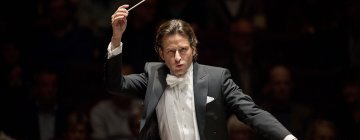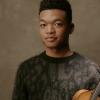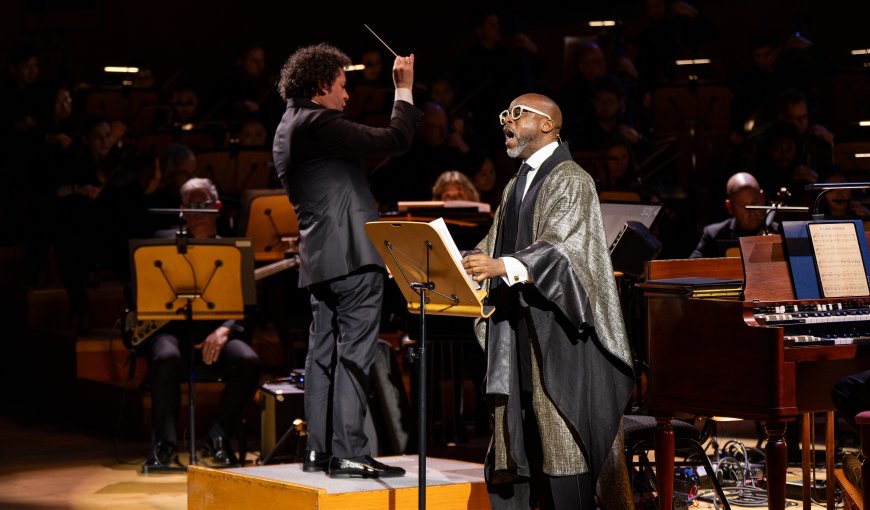
The Los Angeles Philharmonic’s premiere of Carlos Simon’s Good News Mass was like a Christian service. The work’s librettist, spoken-word artist Marc Bamuthi Joseph, was our preacher. And the Walt Disney Concert Hall stage, electric with faith on Friday evening, April 18, was our church.
To create a truly cohesive supergroup, the LA Phil, conducted by Gustavo Dudamel, was joined by R&B artist Samoht, singer and actor Zebulon Ellis, and Jason White and his gospel choir The Samples. Shifting between Joseph’s devotional poetry, solos from Samoht and Ellis, pensive and lush instrumentals, and the tight and ready choir, this 45-minute work was like a kind of church-theater, yet it felt so real.
Hailing from a lineage of Atlanta preachers and musicians, Simon composes in a way that bridges gospel, classical, and jazz. His songs here, with texts by co-librettist Courtney Ware, were all firmly devotional and organized roughly around the form of a Catholic Mass. The instrumental interludes showcased rich orchestration and Simon’s direct, lyrical style — though once the soloists and choir joined in, the LA Phil shifted gears to provide seamless support. The score leaned into the strengths of the performers and their different musical traditions, with respect for everyone evident.
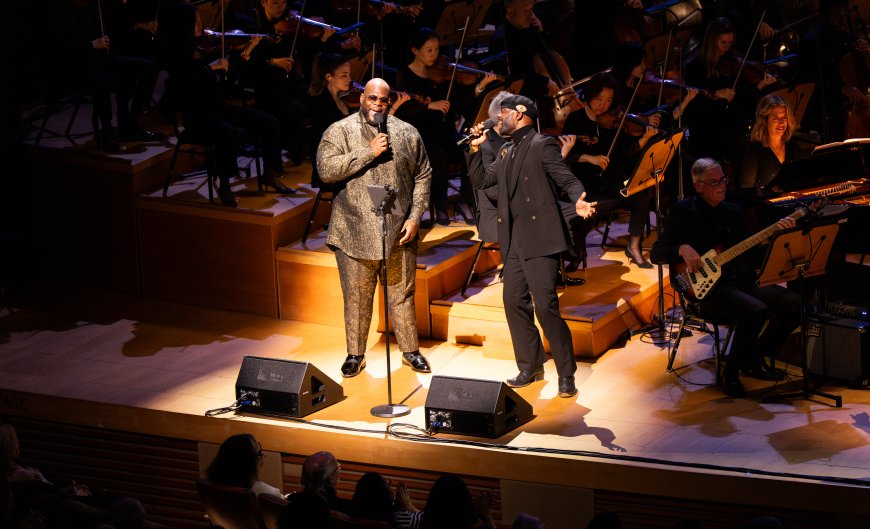
Joseph, an inaugural recipient of a commission from the Guggenheim Social Practice initiative, crafts work that goes well beyond spoken word to include opera, dance, and social justice and equity. On Friday, his declamations as officiant-poet prepared our thoughts for the subsequent songs and prayers.
Simon’s music was complemented by gorgeous, haunting videos directed by Melina Matsoukas (whose filmography includes Issa Rae’s HBO series Insecure, as well as Rihanna’s “We Found Love” music video). These vivid tableaux, all in slow motion, offered imagery from Black American Christianity. Matsoukas opened with a single-shot pan along a sidewalk. We saw the surreal combination of a flaming car, women kneeling in prayer, prostitutes, sheep, and two boys running with costume-store angel wings on their backs.
Good News Mass as a whole worked because the faith expressed by these performers was genuine. Samoht and Ellis both brought conviction to their solos, and only when we had waded deeper into the piece did they burst out in fireworks of runs and death-defying whistle tones. But it was White’s choir, singing the premiere entirely off book, that pumped the blood into this Mass’s heart.
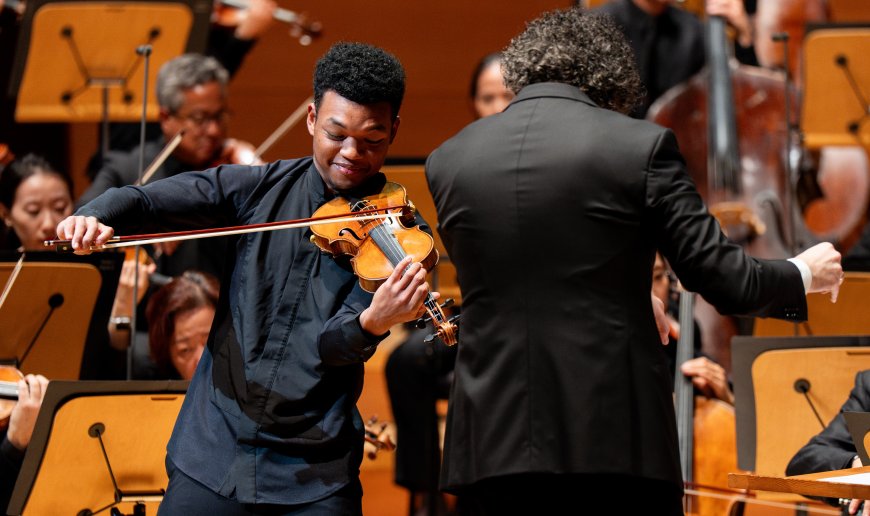
Opening the concert was Leonard Bernstein’s Divertimento, written in 1980 as a sort of love letter to orchestral music. And that is really all this piece is, delightfully so. In eight brief movements, Bernstein flexes every symphonic muscle he has and every musical idiom he fancies, writing a waltz in 7/8, evoking the sound of a sleazy midcentury nightclub band, and busting out a turkey trot. Dudamel and company delivered it all perfectly.
Violinist Randall Goosby is a soloist rightfully on the rise, and on Friday, his performance of Florence Price’s Violin Concerto No. 2 led the audience through the music with clarity and immediacy.
Price (1887–1953) remains an example of the precarious place that marginalized artists and their work inhabit within Western classical music culture. The score for her concerto, dating from 1952, was among those miraculously rediscovered in 2009 in the attic of what had been her summer home.
Her musical language is fairly traditional, ranging from subtle sweetness to bombastic intrigue, with something of a wink added in moodier passages. Price’s love of the orchestral medium and her ability to make a soloist shine in long lyrical lines came across clearly. Goosby illuminated the piece, but Price certainly knew how to set a gem.
